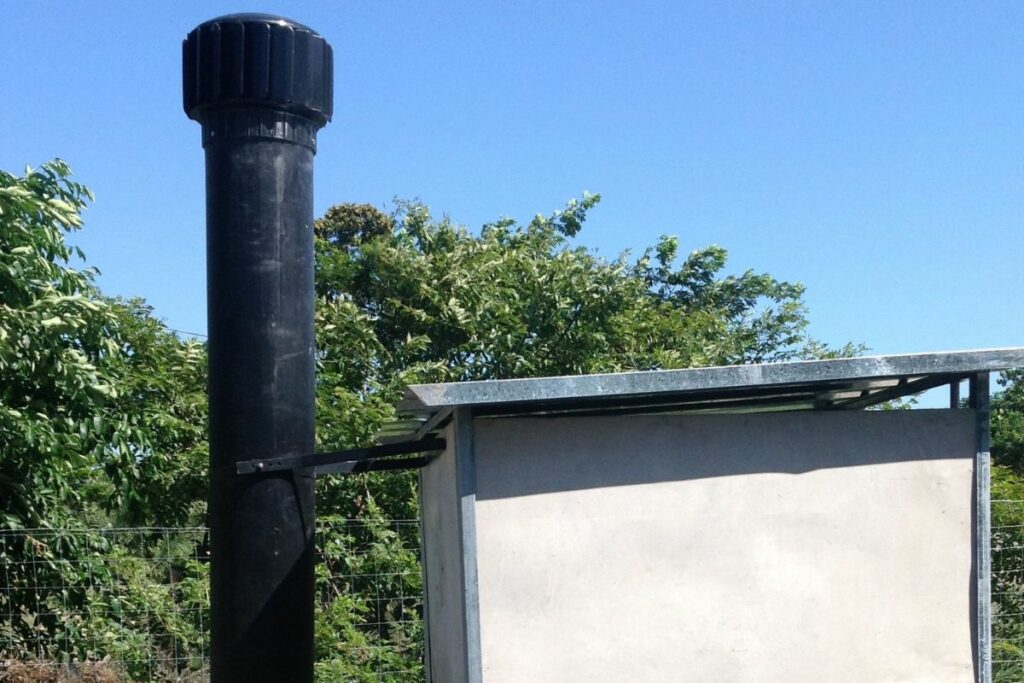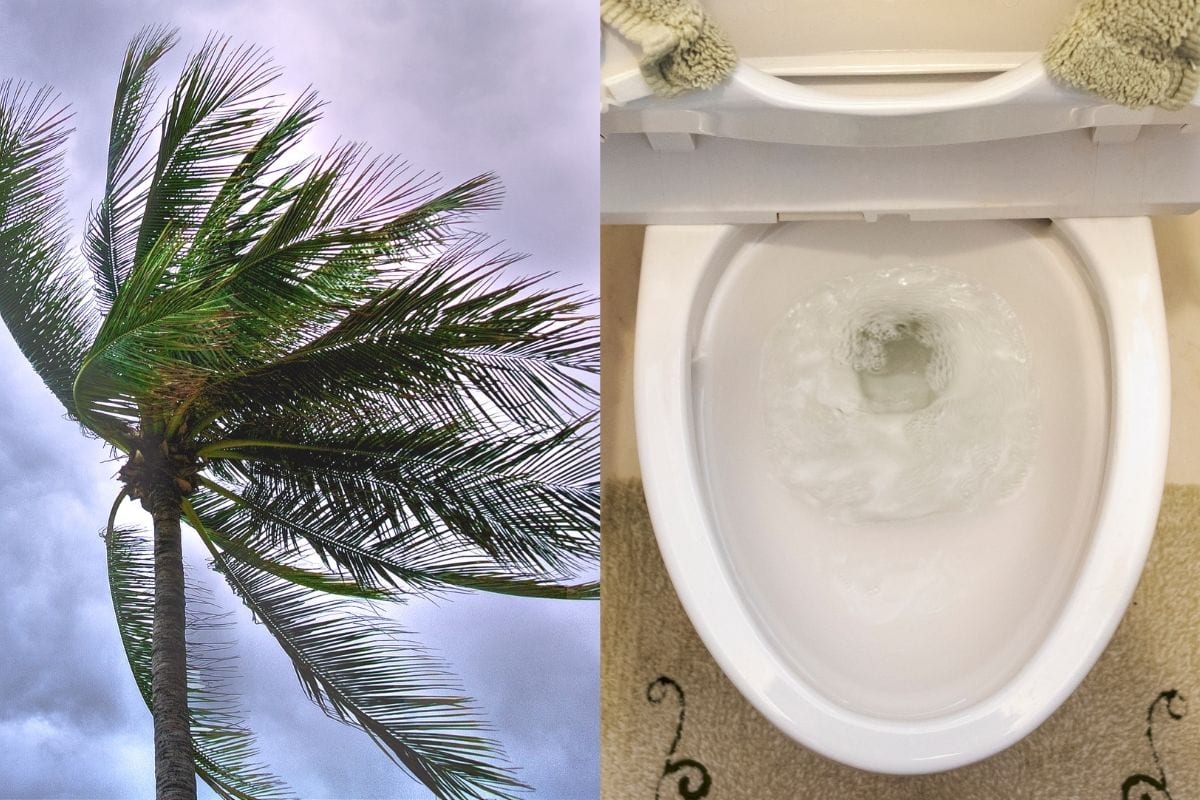Have you ever noticed that when winds are gushing outside on a pleasant weather day, the water inside your toilet bowl gets turbulent?
Is the water just enjoying the weather or does it really have science behind it? To clear the confusion on why toilet water moves when it’s windy outside, keep reading!
Is my toilet water really moving or am I daydreaming?
If it’s windy outside and you notice the toilet water moving up and down, you are not daydreaming. It’s just Physics.
When wind gushes over the toilet vent pipes at high speed, the pressure on the pipe decreases. This creates a suction in the toilet bowl which causes the water to move backward and thus, the water level decreases.
This is an application of Bernoulli’s principle, which you might have studied back in school.
What is Bernoulli’s Principle?
Bernoulli’s principle explains the relationship between pressure and fluid movements. It states:
When the speed of horizontal flow increases, through a fluid, the pressure within decreases.
An Easier Explanation:
Not a science person? Here’s an easier explanation!
The vent pipes connected to your toilet are generally horizontal and go all the way outside your roof.
These vents exhaust any gasses, vapors, and foul smell out of the building to help keep your washroom clean, sanitary, and fresh smelling.
When it’s windy outside, strong wind passes over these vents at high speed. As a result of which the pressure inside the pipe decreases.
The air and water naturally tend to move towards an area of decreased pressure. So when the pressure decreases, the water in the toilet bowl is sucked back.
The same phenomenon is used every time you flush your toilet.
Is it necessary to connect the vent pipe all the way out to the roof?
Most of the time, one end (the exhaust end) of your vent is present on the rooftop. One of the most basic reasons for this connection is to ensure proper exhaust.
Another reason is that your toilet is connected to the main sewer system at one end. The connecting pipe has a lot of sewer gasses in it and the only way to stop that gasses from moving out of your toilet seat into your house is by sealing them.
The seal is provided by water traps that are present in the U or S-shaped bends in your vent pipe just below the toilet seat.
However, this water trap can be drained out when you flush the toilet. In order to prevent that, vent pipes are placed at a location where there is air.
The airflow prevents the water from draining away, thus emptying the water trap.
Therefore it is necessary that one of the vent pipes is placed somewhere the airflow is sufficient.

Can vent pipes be connected to places other than the roof?
Yes! Most vent pipes terminate at the rooftop because it is cost-efficient, easy, and therefore commonly practiced.
However, according to plumbing manuals you can terminate your vent pipe anywhere that is:
- It must not be directly under the vents of adjacent buildings.
- It must not block the air intakes of the building.
- It should be at least 4 feet above a door or a window.
- If the pipe is coming out of a wall, instead of the roof, it should be at least 10 feet away from the building’s perimeter, horizontally.
- The vent must not come out under a soffit that has vents.
Can toilet water rise when the wind is still?
The above explanation raises the question of what happens when the weather condition is opposite, i.e. the wind is calm outside.
The answer to this is yes! As strong wind decreases the water level in a toilet, when the wind is calmer, the water level rises again.
If you keep staring into the toilet water during a storm when the wind speed keeps changing, (i.e. you are either an enthusiast or simply have nothing else to do) you might notice the fluctuation in water levels when the wind is blowing and when it is not.
What other weird things might happen in your toilet during a windy day?
Apart from the changing water levels, you might also notice some other changes related to your toilet plumbing.
A bad odor day is one of them! Sometimes when the storm comes you might notice a foul odor coming out from your toilet.

Although it’s not directly related to windy weather but an underlying plumbing issue that gets highlighted when the wind blows.
Why does the toilet smell bad during a windy day?
The vent stack to your toilet is supposed to exhaust foul smells, however, on a windy day, you might notice some bad odor.
This is because the strong winds force the smells back inside. Although a wax seal, installed at the bottom of your toilet seat, is responsible for controlling bad odor, a broken or worn-out seal can also be the reason for this.
Are there other reasons which can decrease or increase the amount of toilet water?
If the problem persists even after the storm has settled down, there might be underlying plumbing issues.
For instance, the water level in a toilet can also decrease due to a clog in the pipes or a crack in the toilet bowl.

In case of a clog try using a plunger however, if the water level has decreased due to a cracked bowl, you may have to change the toilet bowl.
Similarly, the water level may increase due to a leaking tank. It is best to consult a professional plumber in that case.
In a nutshell
Strong wind can do tricks with your toilet water and it’s nothing to worry about. The water level will level off, once the storm settles. However, if the problem persists you might have to look out for any plumbing issues and contact a professional to sort things within time.

Amos Christen graduated with a bachelor’s degree in Interior Design from Drexel University — Philadelphia, PA. Since 2003, Amos has worked with top interior design professionals in this area, including architects and interior/graphic/lighting designers. As a skilled interior designer, Amos Christen is highly versed in fine arts and crafts and uses that to supplement his main area of expertise. He often publishes articles related to home décor on several websites, including Sprucetoilets.com, Sprucebathroom.com, and Mybesuitedhome.com. He also contributes to leading interior design magazines.
